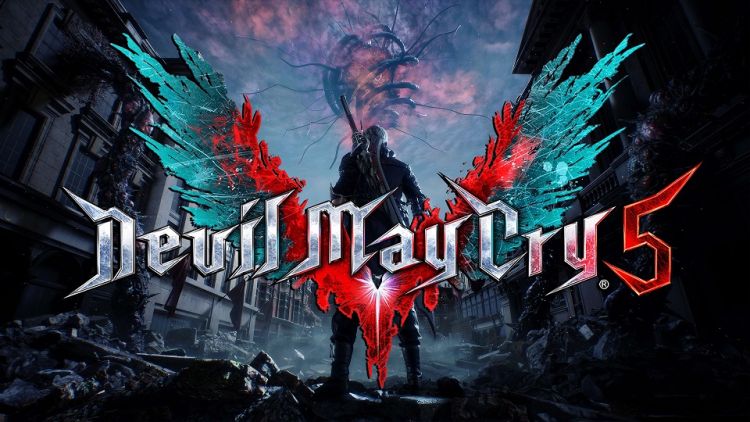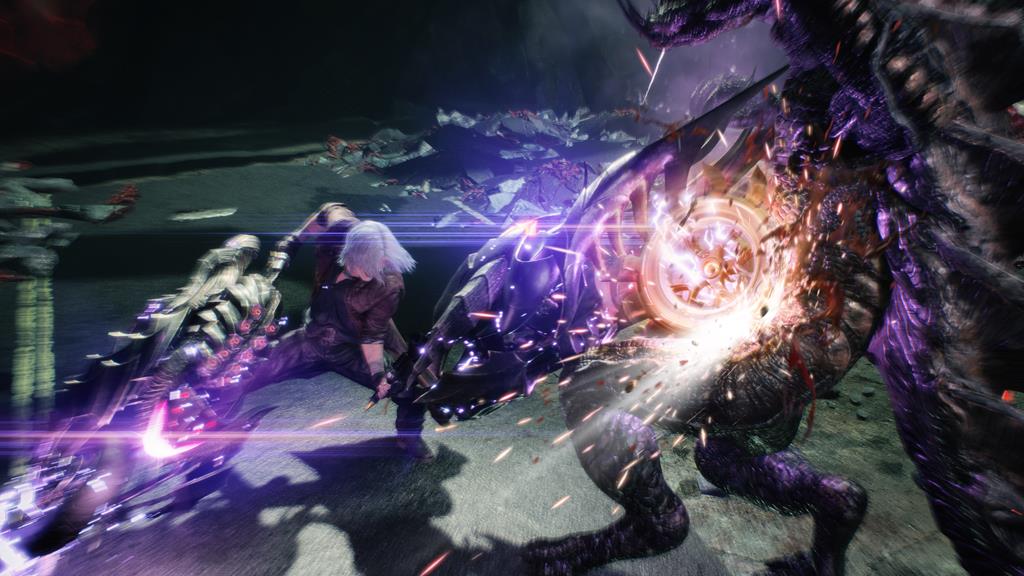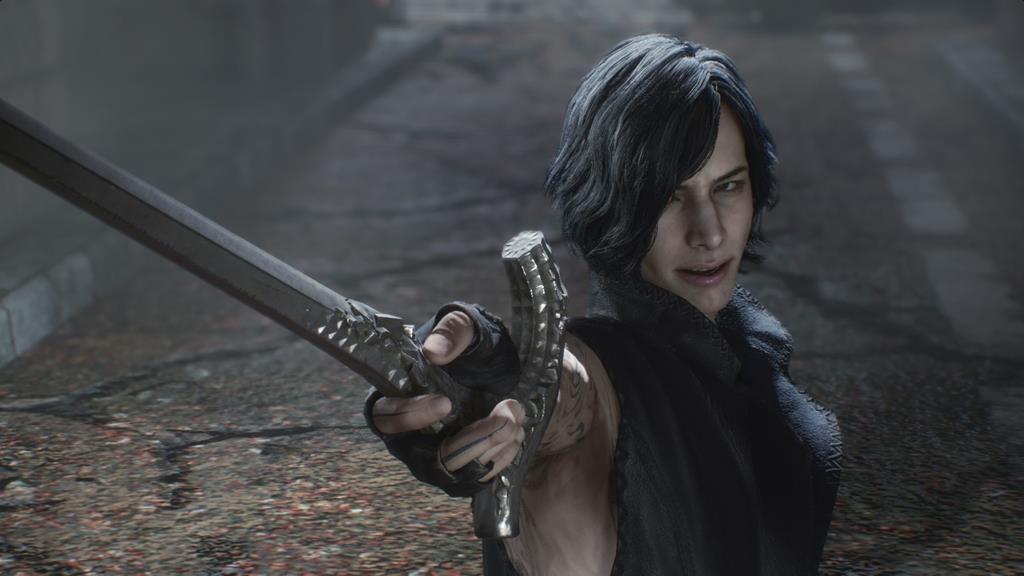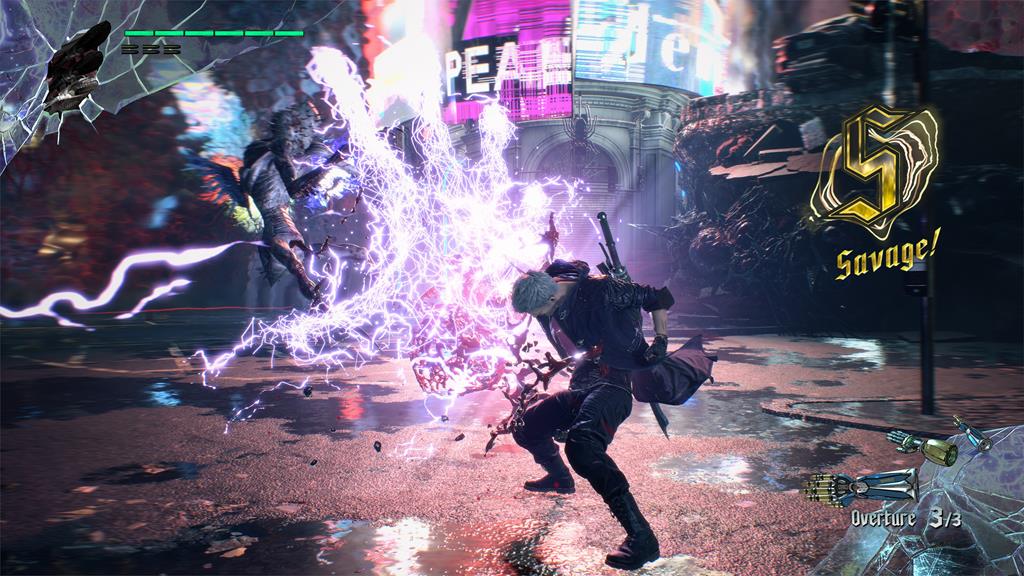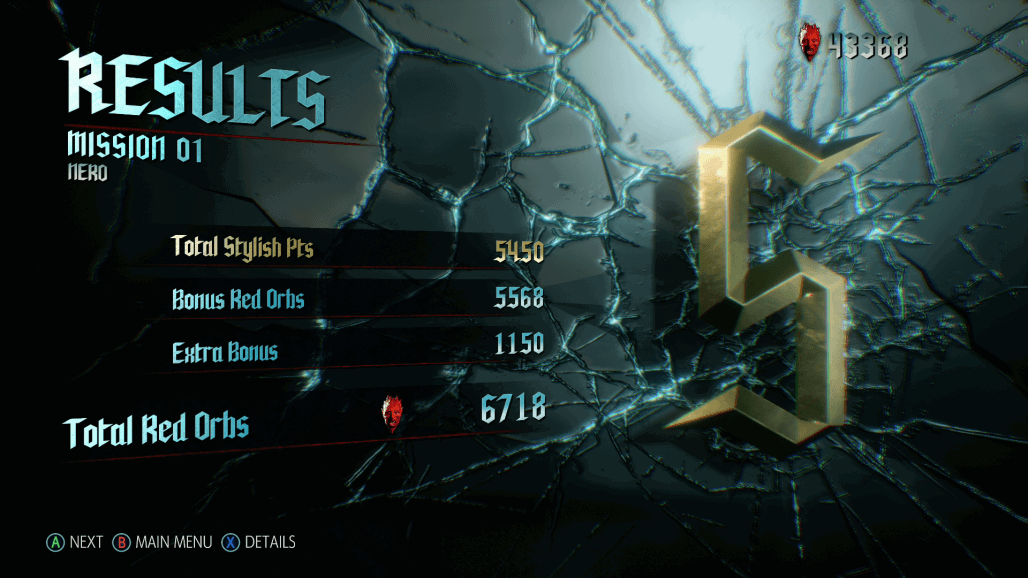My fellow Devil May Cry fans, we’ve waited quite a while for this, haven’t we? After all the years of asking, we’ve finally gotten the sequel that we’ve deserved, and it’s every bit as glorious as I had hoped it would be. Devil May Cry 5 is here! A worthy sequel, a fabulous next-gen title that continues the series that has made us fall in love with doing crazy combos and getting rewarded for them, and hopefully not the last time we’ll see the series in action.
Game Name: Devil May Cry 5
Platform(s): Xbox One (reviewed), PlayStation 4, PC
Publisher(s): Capcom
Developer(s): Capcom
Release Date: March 8, 2019
Price: $59.99 / $69.99 (Deluxe)
Set sometime after the events of Devil May Cry 4, the fifth entry in the series finally attempts to tie together a story that has unfolded across multiple titles. It answers long-standing questions—such as who Nero’s parents are, whether Vergil is still alive—and a few others I won’t spoil here. The narrative isn’t exactly straightforward, and I suspect many fans have already connected the dots. But hey, it’s classic Devil May Cry storytelling—what more can I say?
During my time with the game, I was introduced to three main characters: Nero, V, and Dante. Nero and Dante are familiar faces from previous entries, while V is a newcomer with a distinct and intriguing playstyle.
While Nero and Dante are up-close, in-your-face fighters, V takes a very different approach—he doesn’t attack enemies directly. Instead, he summons creatures to do the dirty work, and they function similarly to the other two characters in terms of gameplay. Griffon, a demonic bird, handles ranged attacks, while Shadow, a panther-like beast, deals damage up close. V’s Devil Trigger summons another creature called Nightmare, a hulking monster that fires devastating lasers and smashes everything in its path. You can even ride on Nightmare’s back and control him for a short time. It might sound strange, but it works surprisingly well. Think of these summons as extensions of V himself. I found playing as V to be quite satisfying—he’s a high-risk, high-reward character. Fragile and unable to take much damage, you’ll need to keep him out of danger while commanding his creatures to stay aggressive.
Playing as Dante feels like reconnecting with an old friend. Armed with both new and iconic weapons—along with his signature combat stances—it’s easy to get lost in the glorious chaos. How can you not feel accomplished when you’re mowing down demons with a weapon made from the two halves of a demonic motorcycle? It’s the kind of over-the-top brilliance that defines Devil May Cry, and it’s absolutely satisfying.
However, for me, Nero is the true star of the game. And I don’t just mean in terms of the story—his playstyle is a refreshing change of pace. With his original Devil Trigger ability gone due to the loss of his arm, he now uses Devil Breakers to continue the fight. These mechanical arms each come with a standard attack and a powerful, charged variant. Some are more useful than others, but they’re all fun and pack a punch.
As you progress, you’ll unlock a variety of Devil Breakers. The downside is that you can’t freely choose which one to use during combat—at least not without destroying the current one to cycle to the next. That design choice feels limiting. Plus, Devil Breakers can shatter if overused or if you’re interrupted while activating them.
At first, you can only carry a limited number of Devil Breakers, but that capacity increases with enough red orbs. You can also customize your loadout, allowing you to equip your favourites—or rely on Nico’s recommended list if you want to jump straight into battle. Personally, out of all the Devil Breakers, I only found three that I consistently enjoyed using.
Like previous games, each character can level up by purchasing skills and upgrades to increase their health, Devil Trigger capacity, and other resources. It’s standard Devil May Cry fare—nothing too surprising there.
Speaking of Nico, I owe her an apology. When I first saw her, I assumed she’d be another Cindy-style character from Final Fantasy XV. I was completely wrong. Nico is anything but one-dimensional. She’s funny, clever, and incredibly sharp. Her dynamic with Nero injects a lot of humour and energy into the story, and there’s never a dull moment when she’s on screen. Honestly, she’s someone I wouldn’t mind hanging out with in real life. I hope we see more of her in future titles.
The combat has me hooked. It’s like a well-composed orchestra when you’re in the groove. While it may take newcomers some time to adjust, once they get the hang of it, the combat becomes second nature—pulling off stylish combos and looking like a total badass in the process. For those not keen on mastering intricate inputs, there’s also an auto-combo mode that can be toggled on the fly. Still, keeping your combo going and striving for that high style rank might not appeal to everyone. Unlike most action games that focus on mindlessly mowing down enemies, Devil May Cry has always emphasised doing it with flair. That added layer of style can be frustrating if you’re giving it your all but still not landing those S-rank scores.
The game also features a curious take on multiplayer with what’s called the “Cameo System.” It’s not multiplayer in the traditional sense—there’s no direct co-op. Instead, in certain missions, you’ll either choose or be assigned a character who takes a separate path or fights alongside you. Behind the scenes, you’re paired with another player who chose the opposite path. For example, while playing as Nero, you might see V battling enemies in the distance—that’s not the AI, but another real player. However, there’s no direct interaction. They’re doing their thing, and you’re doing yours. They’re only helpful if they’re stylish enough to earn cameo credit. Disabling the network feature just means the game will load a recorded “ghost” of another player instead of live syncing. At the end of the mission, you can rate how stylishly your cameo partner performed.
Admittedly, the game isn’t very long. My first playthrough clocked in at around 16 hours, including some light exploration. Still, I found that to be a solid length for an action-adventure title like this. The focus here is not just on progressing through the story, but on clearing encounters as quickly and stylishly as possible. Replay value comes from unlocking higher difficulties and discovering secrets you likely missed the first time. I definitely recommend replaying levels to hunt for those hidden items and paths. And if you ever need a break from the demon-slaying, the gallery section lets you explore the game’s soundtrack, artwork, and other extras.
I played the game on Xbox One X, and I’m pleased to report that it didn’t disappoint. For those wondering—yes, it runs in native 4K on the Xbox One X. The performance was smooth for the most part, though I did notice some minor slowdown during massive attacks. It wasn’t frequent, but it was noticeable. Visually, the game is stunning—everything is highly detailed, especially the character models. Capcom’s RE Engine continues to impress, and this game truly shines because of it. The cutscenes are equally well done, even if a few border on cheesy (in true DMC fashion). Capcom went all out with the visuals, and I can’t think of a single area that looked subpar.
The same praise goes for the sound design. The soundtrack dynamically changes based on your character and fighting style, with tempo and intensity ramping up alongside your combo rank. It’s the kind of audio design that you have to experience to appreciate. The voice acting is also excellent—though I’ll admit Lady sounds oddly like a child—but overall, the performances are strong across the board.
Now for the ugly: microtransactions. Imagine my horror when I tried to purchase a skill, only to realise I didn’t have enough red orbs. In previous games, the system would simply let you know you needed more. Not anymore. Welcome to the age of microtransactions, where nearly everything can be yours—if you’re willing to pay real money. That realization made my stomach turn. I had heard the rumours that Capcom might include microtransactions, but I had hoped they wouldn’t follow through. Sadly, here they are, and I’m not thrilled in the slightest.
It feels completely unnecessary and cheapens the experience. Want those cool upgrades? Then earn them through gameplay—that’s always been the Devil May Cry way. I’m not giving Capcom a pass on this, and frankly, they should’ve known better. To make matters worse, I’m also disappointed in how both Trish and Lady were handled. They’re reduced to little more than fan service, which feels like a disservice to characters who deserved far more depth and respect.
C’mon Capcom, they deserved better than that.
Review Disclosure Statement: Devil May Cry 5 was provided to us by Capcom USA for review purposes. For more information on how we review video games and other media/technology, please go review our Review Guideline/Scoring Policy for more info.
Affiliate Link Disclosure: One or more of the links above contain affiliate links, which means that at no additional cost to you, we may receive a commission should you click through and purchase the item.
Game title: Devil May Cry 5
Summary
In the end, Devil May Cry 5 doesn’t reinvent the wheel—but it doesn’t need to. Instead, it takes everything fans love about the series, cranks it up to 11, and delivers one of the best entries yet. For me, it stands right alongside Devil May Cry 1 and 3. The combat is plentiful, the pacing is spot on, and there’s a solid amount of content to enjoy even after the credits roll.
My only real gripe is the inclusion of microtransactions, which feel completely out of place in a game like this. Still, it’s a minor blemish on what is otherwise a fantastic action game—one I’ve found hard to put down. It looks like Capcom has yet another Game of the Year contender on its hands.
Pros
- Looks amazing on the Xbox One X
- Great audio production
- Plenty of content playthrough, as well as lots to check out during downtime
Cons
- Combat can feel dated at times
- No reason for microtransactions to be included
- Replay value is questionable


